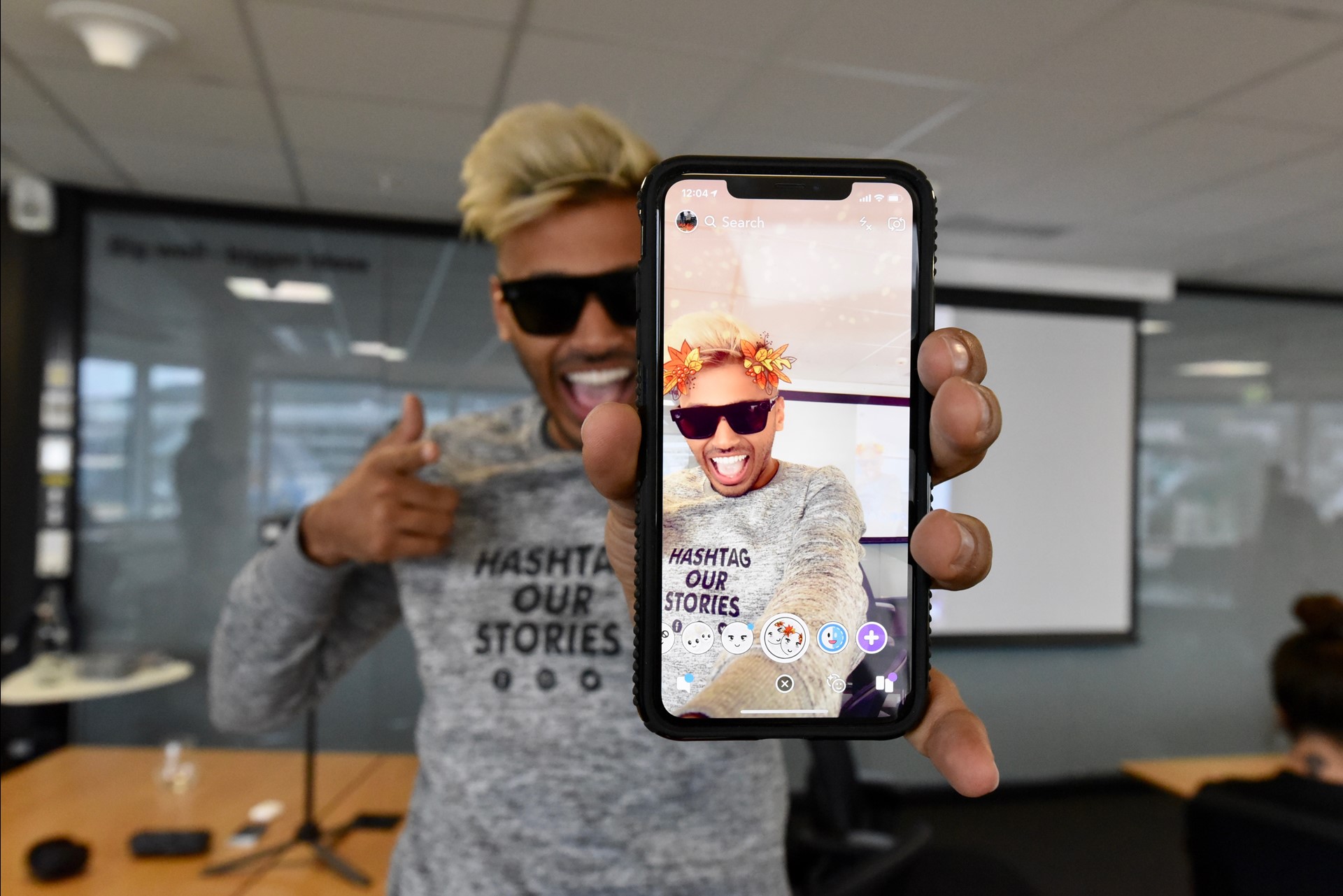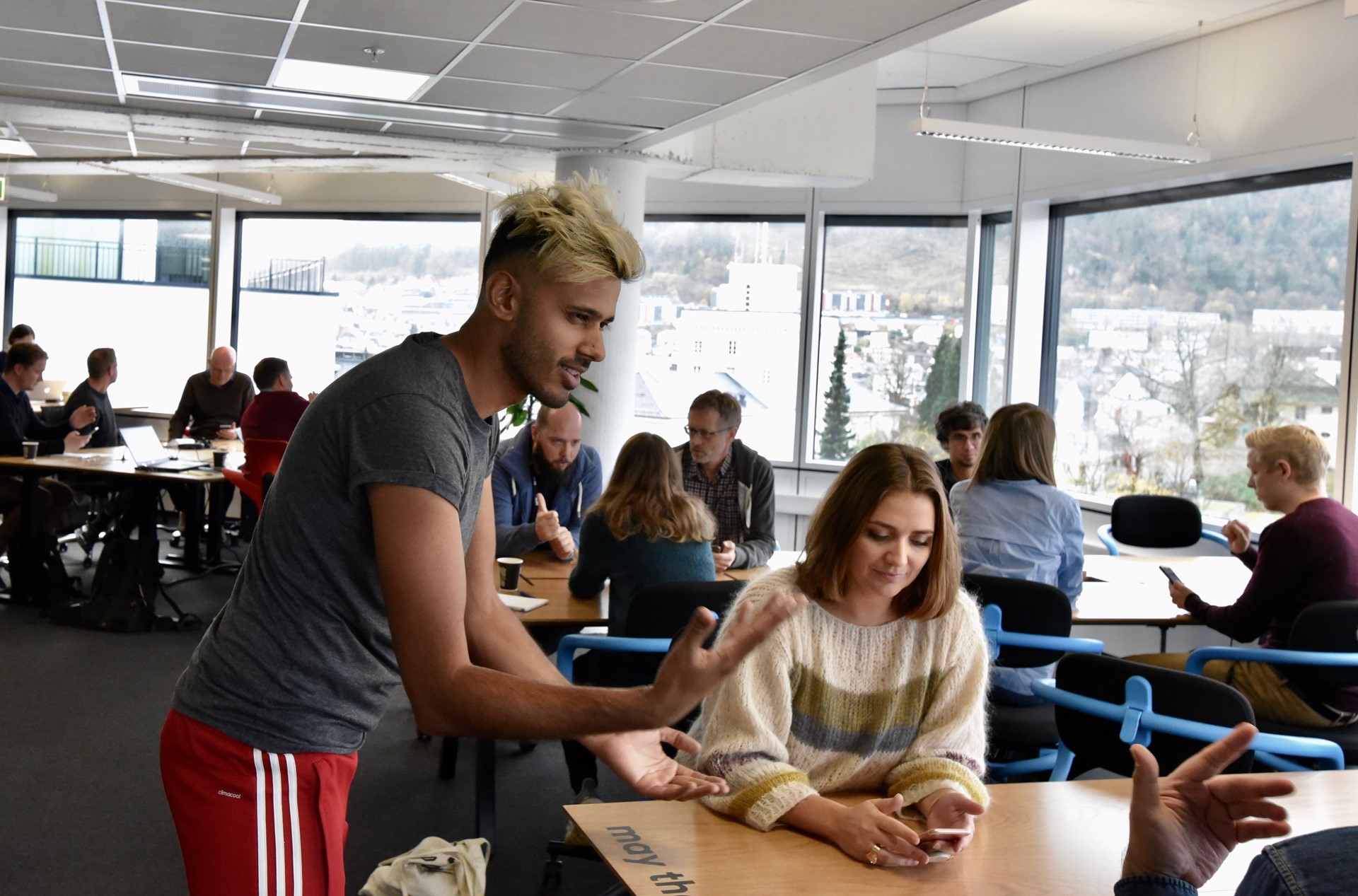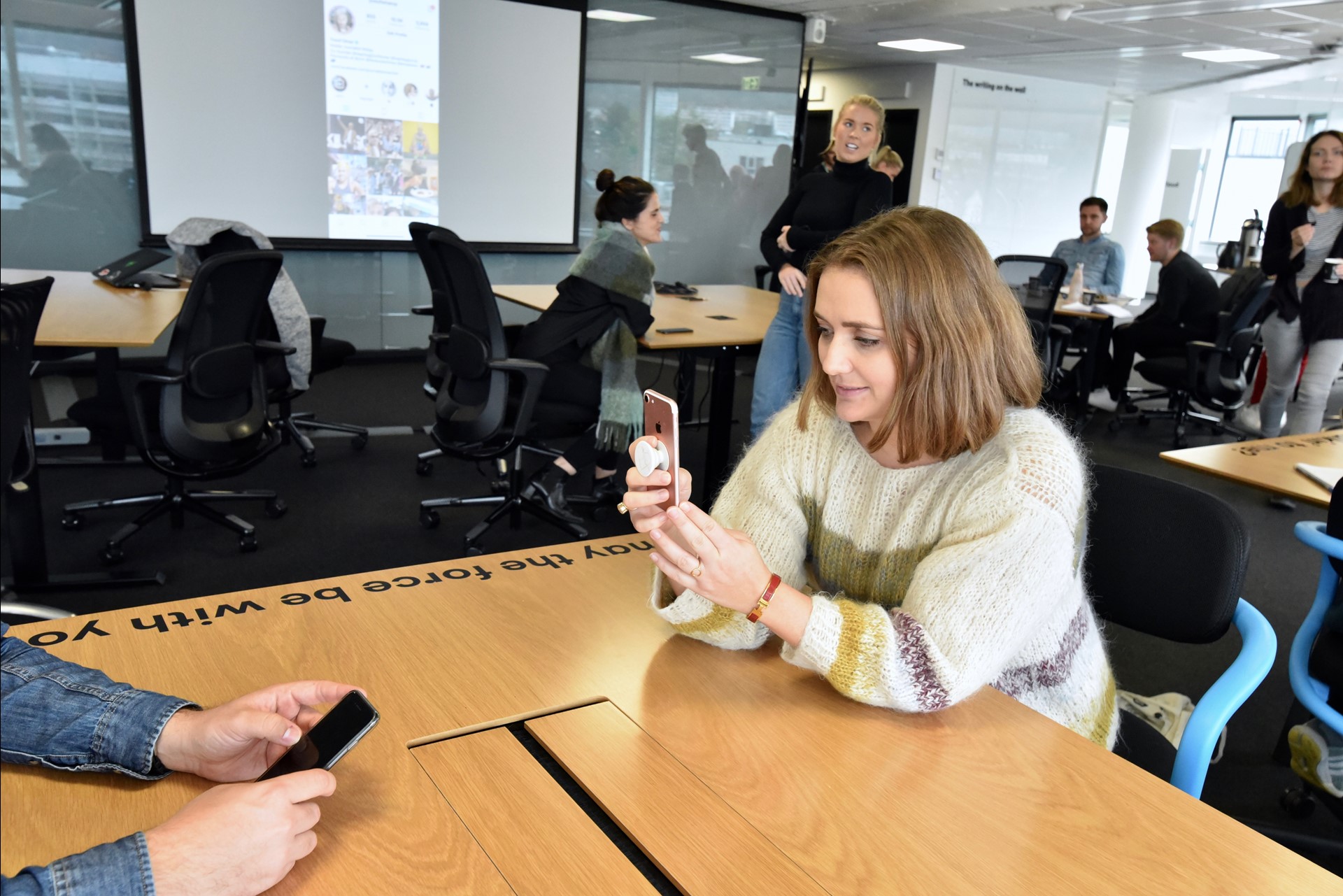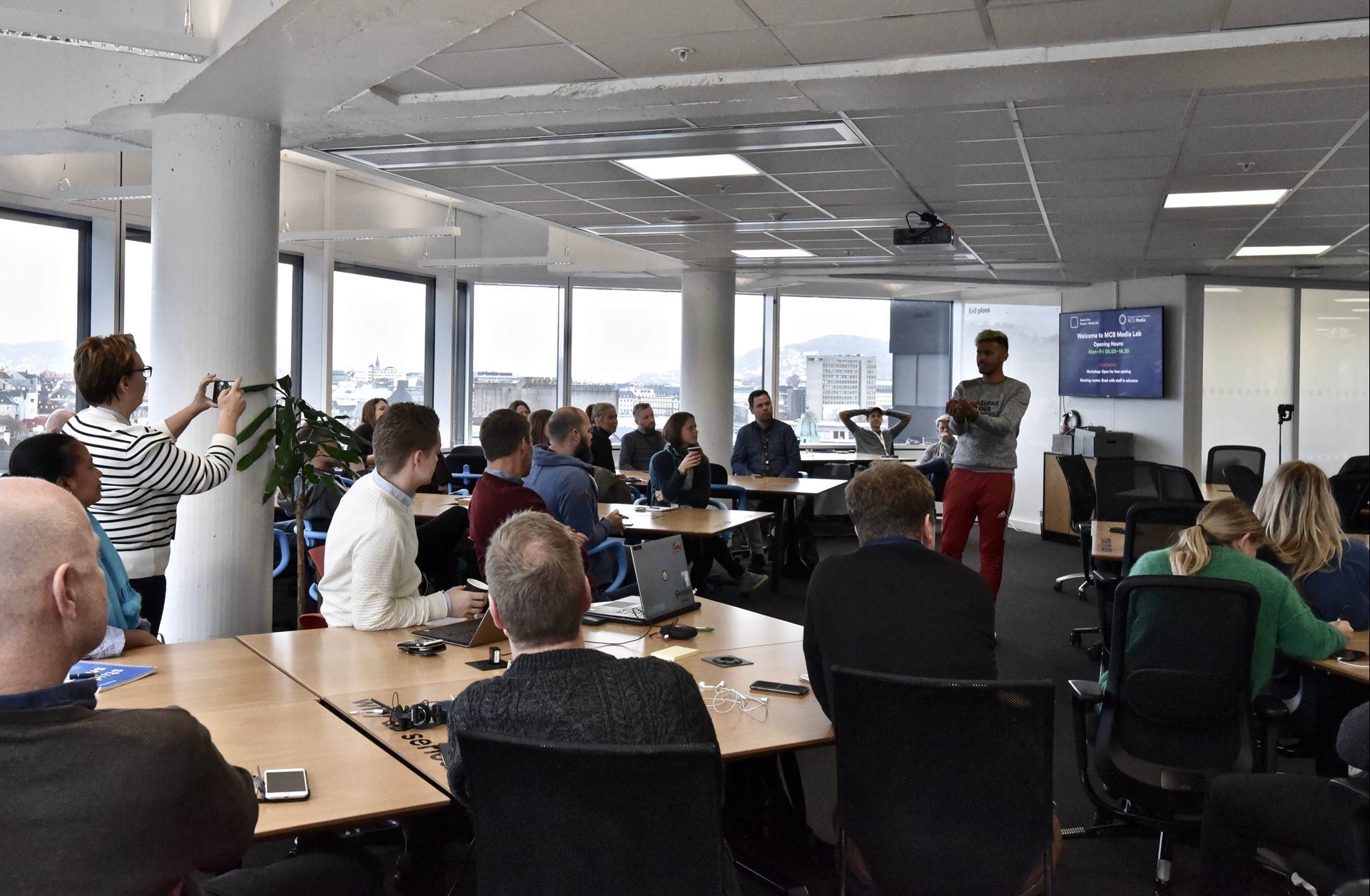- When I went to Syria, I had a handheld camera. Sometimes, I put a camera on my head, so the viewers could see what I saw, he recalls. It was shaky and raw. But it was authentic. It was real.
- We are the YouTube generation. And we are very forgiving of flawed production value, as long as the content is relevant and engaging.
- Besides, I had never been taught how to make traditional TV, so it was easy to break the rules in composition, style and storytelling in this new format that was mobile.
An important part of Omar's work is to train regular people all around the world to use mobile for reporting their own unique stories. Through the initiative Hashtag our Stories, he is building up a global network of citizen reporters. The project recently got funding from Snap.
 Yusuf Omar has built a global name for himself, training both citizen reporters and professional journalists in mobile news reporting.
Yusuf Omar has built a global name for himself, training both citizen reporters and professional journalists in mobile news reporting.
- The next billion people to go online will use mobile as their main channel. And camera is replacing text as the primary input method.
- We started training marginalized groups to tell their own stories through mobile. Their viewpoints are often very underrepresented in mainstream media. Even here in Norway, there is actually a lot of diversity. But all the ethnic communities are not necessarily represented in the newsrooms and on screen.
- We aspire to be a global network of citizen reporters.

 Workshops with Omar are hands-on and interactive.
Workshops with Omar are hands-on and interactive.
The rise of citizen journalism
As speakers, Yusuf Omar and his wife and business partner Sumaia are in high demand around the world. So much, in fact, they have given up on having an apartment, and have called airplanes and hotel-rooms home for months now. They have trained thousands of citizen journalists around the world, and is building a global network of mobile reporters.
But not everyone in the media industry is convinced about citizen journalism.
- This is not journalism, I have been told by some editors and journalists.
- But in fact, the biggest stories of our time have broken through social media first.
- User-generated content cannot replace professional journalists. We need editors and journalists more than ever, to filter and make sense of all the subjective content from the man in the street. Curation is the new creation.
Fun with formats: Last time he visited Bergen, Yusuf Omar was interviewed live in studio on the TV 2 evening news. Here, he is reporting live on Facebook, that he is about to go live on TV.  (Video source: Yusuf Omar's Facebook page)
(Video source: Yusuf Omar's Facebook page)
New user experiences and formats
It is not just the input method and storytelling format that is challenging the old way of doing things. Omar claims that new map-based user experiences, like Snapchat's heat map, will play an important role in how we discover local news in the near future.
And for news outlets to make the most of existing social platforms.
- Live videos have ten times more engagement than regular videos on platforms like Facebook and Instagram.
- But it cannot be live just for the sake of it. It has to have an element of suspense, and engage the viewers to participate.
Norwegian newsrooms still have a way to go
Kristina Bøland, reporter from local newspaper Bygdanytt, was one of the workshop participants. Coming from a small newsroom, she's had ample opportunity to experiment with new formats.
- We have tested Facebook live on several occasions, and some of the streams have been quite successful, she says.
- I came here to find out how to be more relevant, and how to capture our audience. I will take some new tricks home.
- For us, it is not about going viral. It is about hitting a nerve in the local community, and to direct traffic to our own site.
Kjell Jøran Hansen, photographer and video-journalist at NRK, has a more traditional approach to formats.
- It is fascinating to get a glimpse of this new world of mobile journalism.
- This is all new and exciting for me, but to be honest, I don't see my newsroom shaking things up anytime soon.
 Participants had to go out and make their own stories.
Participants had to go out and make their own stories.
When it comes to adopting new formats, how good are Norwegian media outlets?
- Norway is not the worst, states Omar.
- I recently saw some original ideas and concepts coming out of NRK Super, where they were relying heavily on interaction with viewers.
- But when you think about the fact that everyone in this country can afford an iPhone, and you have some of the best tech-infrastructure out there, I think you could do much better.
- You can afford to experiment more, and lead the way.
 Media professionals from the media cluster attended the workshop in the MCB Media lab.
Media professionals from the media cluster attended the workshop in the MCB Media lab.
Text by Hilde Gudvangen
